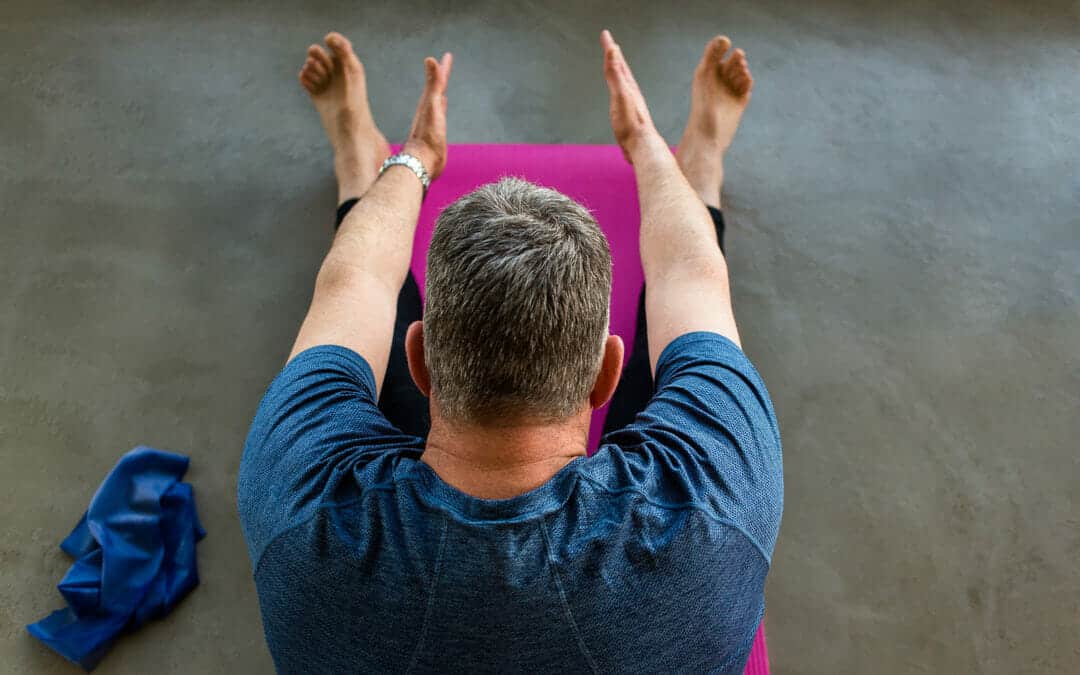How to Modify Your Pilates Practice for Back Pain
The latest research shows that exercise is one of the most effective ways to manage and overcome back pain. Pilates, in particular, is highly beneficial because it strengthens your core—the essential support system for your spine—and promotes balanced muscle development.
Certified Pilates teachers are trained to adapt sessions for people with back pain, osteoporosis, osteopenia, and other related conditions. If you’re practicing on your own, here are a few key guidelines:
1. Listen to Your Body
If an exercise causes pain, stop. Muscle soreness a day or two after your workout is normal, but sharp or persistent pain is not. The difference is simple: if you wake up thinking “Hello muscles!” that’s good; if you’re wondering “What did I do to myself?” that’s a red flag.
2. Keep It Gentle
Choose low to moderate intensity workouts. You don’t have to push hard to benefit. Level 1 classes or modified advanced exercises reduce unnecessary strain on your back while still strengthening your core and improving mobility.
3. Prioritize Alignment
Good form matters more than quantity. A few mindful repetitions performed with proper alignment are more effective—and safer—than rushing through many with poor form. If needed, shorten your sessions to maintain quality over quantity.
4. Avoid or Modify Risky Movements
Certain classic Pilates exercises involve loaded spinal flexion and rotation, which can be problematic if you have back pain, osteopenia, or osteoporosis. These movements should be avoided, modified, or limited. Instead, build your practice around pre-Pilates exercises to safely develop strength and flexibility.
Exercises to approach with caution include:
-
Abdominals: Hundred, Roll Up, Neck Pull, Teaser, Series of 5
-
Rolling exercises: Rolling Like a Ball, Open Leg Rocker, Seal
-
Spinal exercises: Spine Stretch Forward, Saw, Rollover, Jackknife, Corkscrew (full expression), Hip Circles
Five Tips to Prevent Back Pain During Pilates
-
Shorten your lever – Adjust the position of your arms and legs to decrease strain on your back (e.g., bend knees in The Hundred).
-
Think up, not out – Visualize lengthening upward instead of pushing outward in exercises like Single Leg Stretch.
-
Focus on form – Pay attention to details in classics such as Bridge to ensure your back is supported.
-
Maintain neutral spine – If articulating the spine causes discomfort, stay in neutral and gradually build strength.
-
Soften your ribs – If your ribs flare, reduce your range of motion until your core strength catches up.
💡 Note: Sit-ups and similar movements can be hard on the back. They press your spine into the floor and overwork the hip flexors, which—when tight—tug on the lower spine and contribute to discomfort (Harvard Health).
✨ Pilates can be a safe, effective, and enjoyable way to support back health—as long as you listen to your body, adjust when necessary, and seek guidance when in doubt. Working with a trained instructor can help you stay safe while still making progress.
Last updated 8/21/2025
Contact Us
Please email us to request more information about our services and collaborations.
Stay Connected
Subscribe free to receive our latest tips, workouts, exclusive offers and community notifications every Monday. Read the Latest Newsletter.


